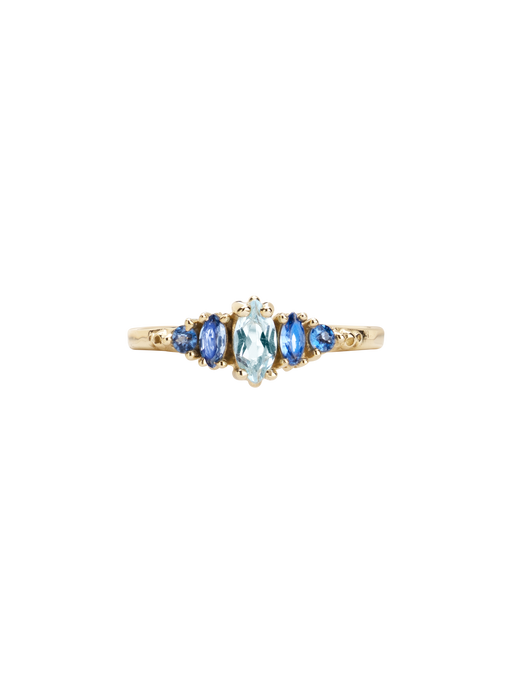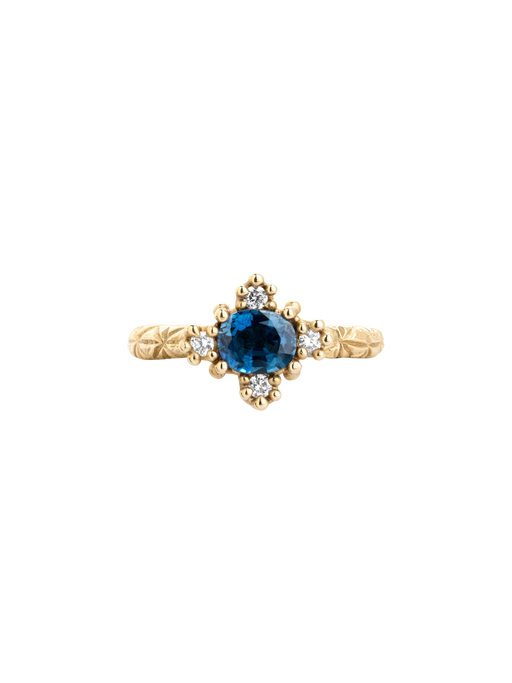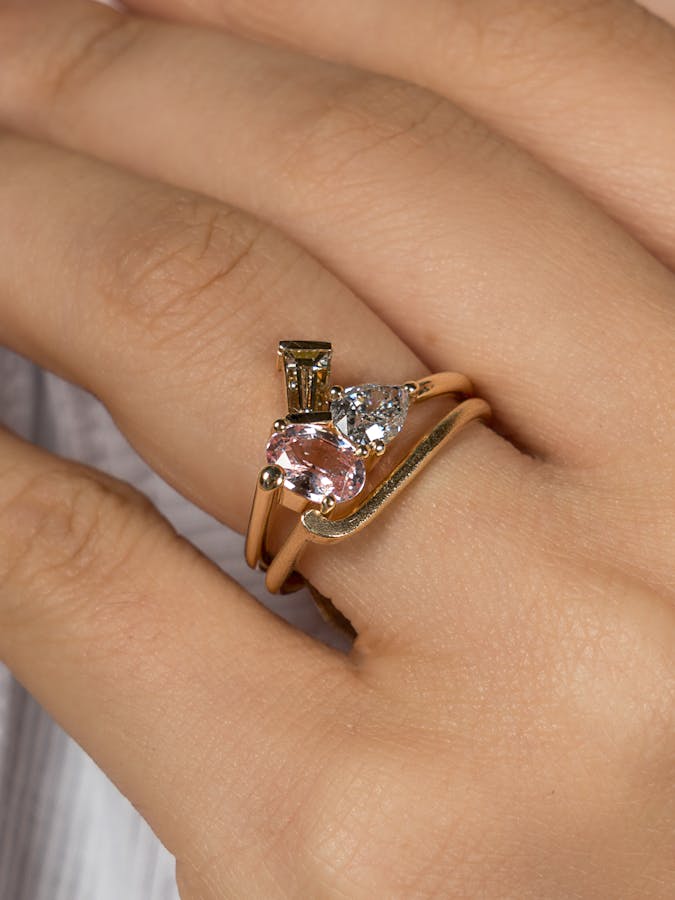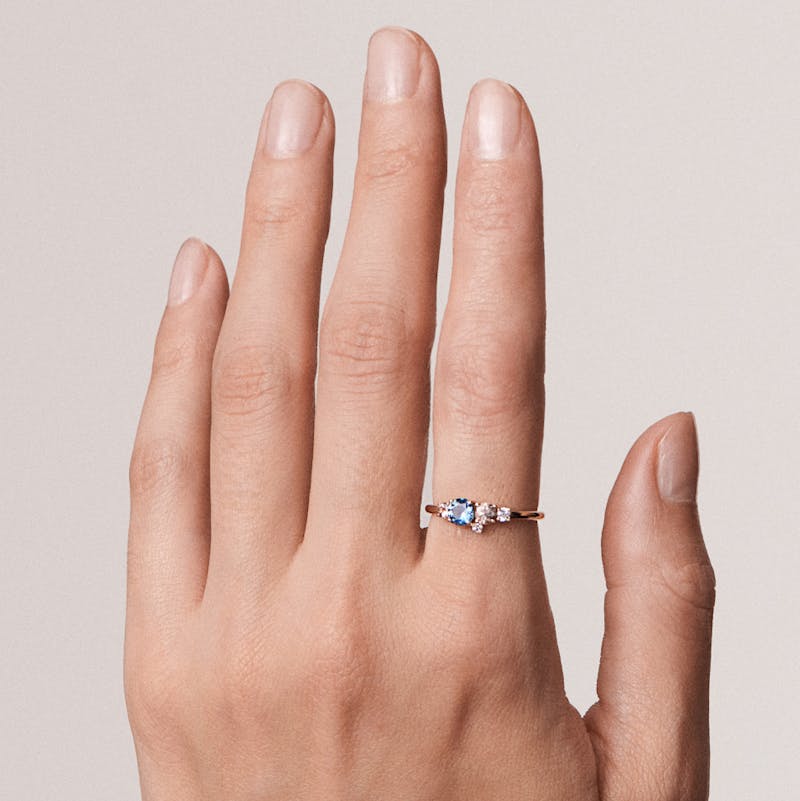Coloured gemstones in engagement rings
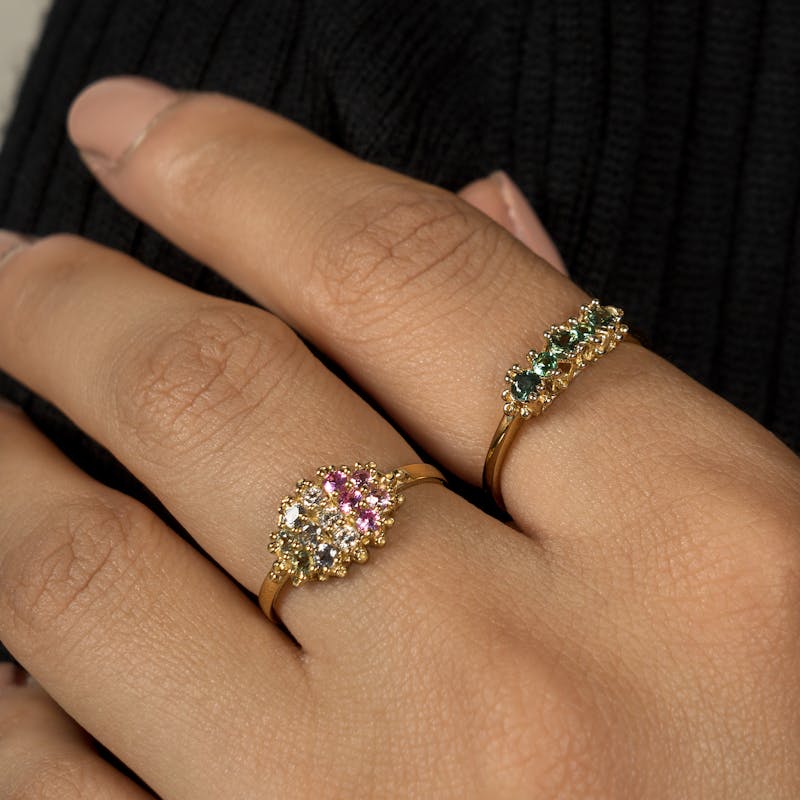
Engagement rings have been around since Roman times, but it was Pope Nicholas I – born in 820 AD – who decreed engagement rings to be the “official” form of declaring intentions of marriage. He also decreed the metal to use… gold.
Gemstones have been used throughout history but the earliest diamond engagement ring on record was commissioned by the Archduke Maximilian of Austria for Mary of Burgundy, in 1477.
However, the Archduke didn’t set a trend at all. In fact, we have to wait for the diamond rush in South Africa, in the 19th century, to see diamonds become more widely available.
British company De Beers, which mined diamonds in South Africa, put diamonds on the map with its “A Diamond is Forever” campaign in 1947. During the Depression of the 30s, De Beers really pushed its star product and was also responsible for the myth you should spend one month – or three months – salary on an engagement ring. In fact, the BBC states: “De Beers, which controlled 60% of rough diamond, embarked on what it now describes as a "substantial" campaign, linking diamonds with engagement.”
Before WWII, only 10% of engagement rings had a diamond, while this jumped to 80% by the end of the 20th century. Advertising at its most effective.
Coloured gemstones for engagement rings, however, have a longer and more varied history than diamond rings could ever have. And we’ve seen a return to the coloured gemstone engagement ring, most famously when Prince William used his mum, Princess Diana’s, blue sapphire ring to propose to Kate Middleton.
Gemstones’ long association with symbolism and hidden meanings have made coloured gemstones in engagement rings extremely popular throughout history.
Despite diamond’s popularity as the gemstone of choice for engagement rings today, it’s worth considering a coloured gemstone engagement ring, combining both colour symbolism and an alternative look to more common diamond styles.
For those wanting to explore this option, you may want to start your search by thinking about colour preferences and explore different gemstones from there. Or you may want to look at the hidden meanings of some popular engagement ring gemstones, as outlined below.
BLUE STONE ENGAGEMENT RING
Princess Diana’s blue sapphire engagement ring – now Kate Middleton’s – is one of the most recognisable pieces of jewellery of modern history. Originally in the crown jeweller Garrard’s catalogue, the ring wasn’t a favourite of members of the Royal family who thought it wasn’t right commoners could get access to jewellery owned by royals.
We’re glad King Charles still went ahead with his decision to give Diana the ring - but blue sapphires are not the only blue stones suitable for an engagement ring. Check out the meaning of some popular stones:
Aquamarine: affection, fidelity and eternal love
Blue Sapphire: loyalty, truth and honesty
Blue Topaz: peace and tranquillity, loyalty and eternal love
Tanzanite: magic and spiritual awakening
GREEN STONE ENGAGEMENT RING
Green gemstones were the favourites of ancient Egyptians, who believed they brought luck to the wearer. Peridot and emerald were regularly confused for one another, with Cleopatra said to have favoured peridot by some, while other believe it was emerald. There are quite a few different stones to choose from for a lucky engagement ring, including some of the gems listed below.
Emerald: enduring, everlasting love – the stone in Queen Victoria’s engagement ring.
Peridot: prosperity and good fortune
Prasiolite/ green quartz: true love
Tsavorite/ green garnet: happiness in love
PINK STONE ENGAGEMENT RING
Throughout history, pink sapphires were associated with royalty. Royals would wear sapphires to ward off envy and harm. Princess Eugenie’s ring has a padparadscha sapphire as a centre stone, proving pink stones are still favoured by royalty, and there are a variety to choose from, all with some hidden meanings.
Morganite: match made in heaven
Pink diamond: love and creativity
Pink sapphire: resilience and strength
Pink tourmaline: trust
Rose quartz: unconditional love
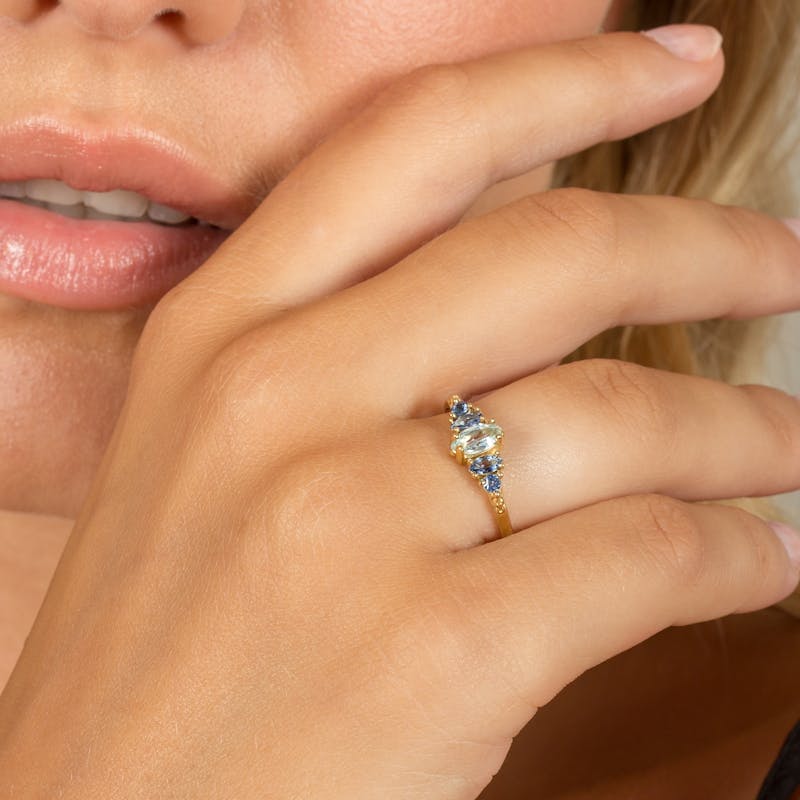
RED STONE ENGAGEMENT RING
The colour of blood, ruby is in fact a red sapphire. The largest ruby ever mined was the Liberty Bell Ruby. It was stolen in a heist in 2011, and while they prosecuted the thieves, the stone was never found. The meaning behind red stones are:
Almandine Garnet: unity of passion and serenity
Ruby: passionate love
YELLOW STONE ENGAGEMENT RING
From protection against snake venom and evil thoughts to adorning the weapons of warriors in Scotland, citrine and yellow stones have a long history as adornments, and signify happiness.
Citrine/ lemon quartz: happiness and prosperity
Yellow sapphire: happiness
OTHER ENGAGEMENT RING STONES
Gemstones come in every colour imaginable, and you are of course not limited to the stones listed here.
Some additional stones and their meanings:
Champagne Diamond: commitment
Moonstone: eternal love
Opal: love, passion and desire
Whether you prefer a diamond ring or opt for a coloured gemstone, don’t forget an engagement ring is the most important piece of jewellery you are likely to ever buy. Don’t get too hang up on trends or what anyone else is doing: it should reflect you and your partner’s style, taste, and budget.


